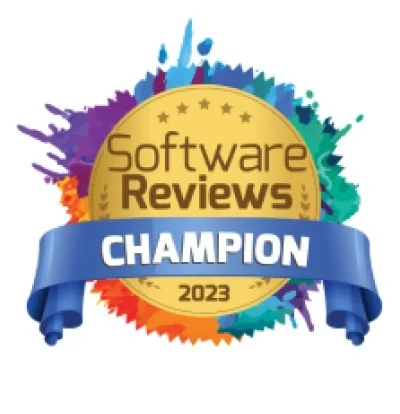Why on earth do you want to manage your data?
If you’re now staring at the screen wondering what on earth is wrong with us for not thinking the answer is obvious, we apologize. Let’s try again.
The need for data management is a given. But your why matters when it comes to choosing your process and your tools.
Data management for BI is different than data management for other reasons and, correspondingly, needs a different set of tools.
Let’s take a look at the distinctions.
Data as an asset vs. data as a liability
If you have a decent amount of meaningful data, you probably don’t want it to go AWOL. Data loss and data theft are concerns that call for management solutions encompassing data protection, security, backup and recovery. This motivation for data management applies across the board, from Fortune 100 companies sitting on untold terabytes of data, down to the 13-year-old with a gigabyte or two of photos from a skiing trip.
If your data is not only meaningful to you (read: ski trip photos), but also to other individuals or entities (read: credit card or healthcare information), then you may be required to manage your data for regulatory compliance reasons. GDPR, PCI DSS, HIPAA… just scramble a bunch of letters together and you’ll probably get the acronym of some data compliance standard out there.
These two types of data management (i.e. to prevent loss and for compliance) are liability management. You’re spending time and resources to manage your data purely to prevent negative consequences. No one (sane) pulls out a bottle of champagne because “Yay – my data’s still here!” or “Yay – I wasn’t slapped with a fine!”
If your data management enables you to breathe a sigh of relief (as opposed to jumping for joy), that’s a good sign that it’s managing data as a liability.
In contrast, data management for BI is asset management. Business intelligence is the primary place where your data becomes an asset. But the data needs to be managed so that it can be leveraged as an asset, driving your business forward and creating positive ROI.
In order for data to fulfill its potential as an asset, it needs to be:
- accurate
- organized
- accessible
Keeping your data accurate, organized and accessible is the goal of BI data management. What tools do you need in your toolkit to make sure your data can be utilized as a business asset?
Let’s take a look at three mission-critical tools (plus one bonus!) and exactly what they help you with.
Data lineage tool: accuracy
You can’t manage what you can’t see.
A data lineage tool gives you visibility and transparency into your data: where your numbers came from, where they ended up, and what happened to them along their journey from source systems all the way to BI reporting tools.
When the pedigree of any data asset is available upon request, every user can feel confident in the data’s accuracy. (We’ve had clients who started using our automated data lineage solution, and suddenly everyone in their organization was “trusting their data and believing in their data.”)
On the occasions when a report or dashboard error does show up, it doesn’t take long to do some BI root cause analysis and track down the source of the error using a data lineage visualization.
The visibility provided by data lineage also enables you to streamline your data asset management by breaking down data silos and eliminating redundancies. After all, do you really want to dedicate resources to three processes that do exactly the same thing? That’s about as reasonable as the owner of a residential complex paying three superintendents to manage the exact same set of apartments.
In other words, not at all.
Data lineage tools also come in handy for the data management motivation of regulatory compliance. Reduce the time (and stress!) spent preparing for audits with easy-to-access transparency into your data trail.
Data catalog tool: organization and accessibility
When your data is organized, the more of it, the merrier.
When your data is disorganized, the more, the messier.
The ultimate data organizational tool, letting any data user in your organization easily see what data assets you have and all the pertinent details about them, is a data catalog.
A data catalog uses your data ecosystem’s metadata to build a complete picture of every data asset: definition, calculation, access level, stewardship roles, and previews.
With a powerful and intuitive search function (one of the top must-haves in a data catalog for business intelligence), both your technical and non-techie users can easily find and access the data they need for analysis and actionable business insights.
Comprehensive catalog solutions feature collaboration and communication tools, so users can get at the metadata that is otherwise only available in other team members’ heads.
Ideally, a data catalog solution will be automated, i.e. will pull metadata automatically from all your data systems and use it to create and periodically update the data catalog. Attempting to manually construct and keep a data catalog updated basically ensures it will be perpetually out-of-date. Even an automated data catalog will need some human supervision to make sure it got everything right and to add in missing information, but the work is minimal (and doable!) when compared to a DIY version.
Bonus tool: active metadata management
An active metadata management tool adds a maître d’ to self-serve analytics.
Active metadata management takes your managed metadata (which you need anyway, to power your data lineage and data catalog tools) and goes at it with machine learning and algorithmic analysis.
The result: automated finding of patterns and anomalies, asking questions and drawing conclusions.
An active enterprise BI metadata management strategy can highlight data quality and data privacy issues, correct reports, enrich data science models and point out business opportunities and risks.
You can have your active metadata management solution take automated action (good for more minor, cut-and-dry issues) or alert a human data intelligence manager with the finding.
While an active metadata management tool isn’t a must-have for BI data management, it’s a very-very-nice-to-have.
Asset, here we come!
If you want your data to be a business asset, treat it like one.
Definitely implement the data management solutions you need to prevent your data from being lost or causing you compliance problems, but don’t neglect the tools you need to leverage the actual intelligence contained within your data.
You’ll soon be jumping for joy and breaking out the champagne to celebrate – and you’ll look mighty intelligent doing it.













